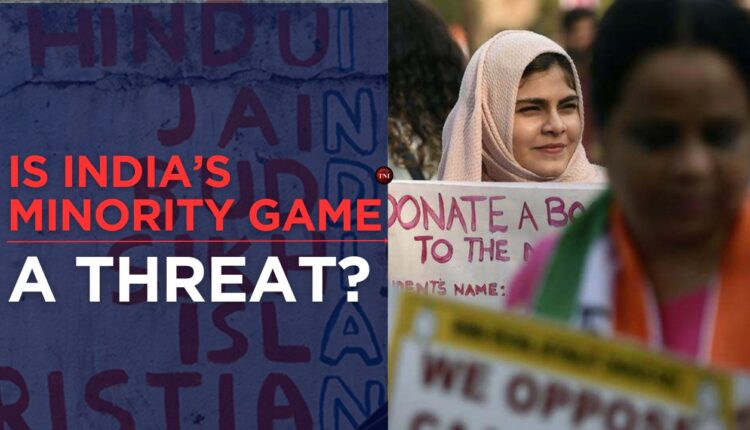India’s Minority Challenge: Threat or Strength in Diversity?
However, in recent years, the role of minorities—whether defined by religion, caste, or ethnicity—has become a contentious topic, with some portraying them as a threat to the nation’s unity and progress.
India’s identity as a diverse and pluralistic democracy has always been shaped by its myriad communities, each contributing to the country’s rich cultural and social fabric. However, in recent years, the role of minorities—whether defined by religion, caste, or ethnicity—has become a contentious topic, with some portraying them as a threat to the nation’s unity and progress. This perception, driven largely by political narratives and socio-economic disparities, raises critical questions about the future of India’s democratic ideals and its social harmony.
Minorities in India encompass a wide spectrum of groups, including Muslims, Christians, Sikhs, Buddhists, Jains, and tribal communities. Together, they form nearly 20% of the population, with Muslims being the largest group. The caste system further complicates the landscape, as Dalits and tribal communities, although not religious minorities, face systemic marginalization. Historically, these groups have faced varying degrees of socio-economic and political challenges, leading to their struggles for recognition, rights, and equality.
One of the recurring arguments that fuels the perception of minorities as a threat is the issue of demographics. Concerns about the population growth of certain groups, particularly Muslims, have been amplified by fear-mongering narratives suggesting an impending demographic imbalance. However, data shows that fertility rates across all communities, including Muslims, are declining, and the idea of a drastic demographic shift is largely unfounded. Such narratives, though, continue to stoke mistrust and polarization.
Another significant factor is the accusation of “minority appeasement” by political parties. Critics argue that policies aimed at uplifting minorities, such as reservations or targeted welfare schemes, often come at the expense of the majority population. While it is true that political parties have historically used identity-based strategies to secure votes, the reality is that many minority groups remain disadvantaged. For example, the Sachar Committee report highlighted the dire socio-economic conditions of Muslims, who lag behind in education, employment, and access to basic services. These inequalities underscore the need for targeted interventions rather than signaling preferential treatment.
The cultural dimension of this debate is equally complex. India’s minorities often seek to preserve their distinct identities, traditions, and practices, which some view as a challenge to national integration. Yet, India’s strength lies in its diversity, where multiple identities coexist under a shared constitutional framework. Attempts to homogenize this diversity under a singular cultural or religious narrative risk alienating large sections of the population and undermining the ethos of inclusivity.
Support Independent Journalism? Keep us live.
At the heart of the minority debate lies the role of politics. The rise of majoritarian ideologies has shifted the discourse from one of coexistence to one of dominance. In recent years, instances of communal violence, hate speech, and religious intolerance have risen, creating an environment of fear and insecurity among minorities. The portrayal of minorities as “the other” has not only deepened social divisions but also eroded trust in the institutions meant to protect their rights.
The consequences of perpetuating the narrative of minorities as a threat are far-reaching. Social polarization disrupts communal harmony and breeds mistrust, while economic marginalization limits the potential for national growth. Furthermore, any erosion of democratic values—such as secularism and equality—undermines the principles enshrined in the Constitution. On the global stage, how India treats its minorities affects its reputation as a rising power committed to human rights and pluralism.
In truth, minorities themselves do not pose a threat to India. The real danger lies in the mismanagement of minority issues and the deliberate politicization of their struggles. Policies that exclude or alienate these groups risk creating long-term disparities and resentment. Similarly, failure to address hate speech and communal violence can destabilize the country’s internal harmony.
India’s diversity is not a weakness; it is its greatest strength. Embracing this diversity requires a renewed commitment to the principles of fairness, inclusivity, and justice. Rather than viewing minorities as a challenge, the nation must work toward integrating them fully into its socio-economic and political fabric. This involves fostering dialogue, addressing socio-economic inequalities, and reaffirming the constitutional values that have held the country together for decades.
The so-called “minority game” is not inherently a threat. Instead, it is a test of India’s ability to uphold its democratic ideals in the face of diversity. How the nation navigates this challenge will determine whether it continues to thrive as a pluralistic society or succumbs to division and discord. The future of India lies in recognizing that its strength comes not from uniformity but from unity in diversity.


Comments are closed.